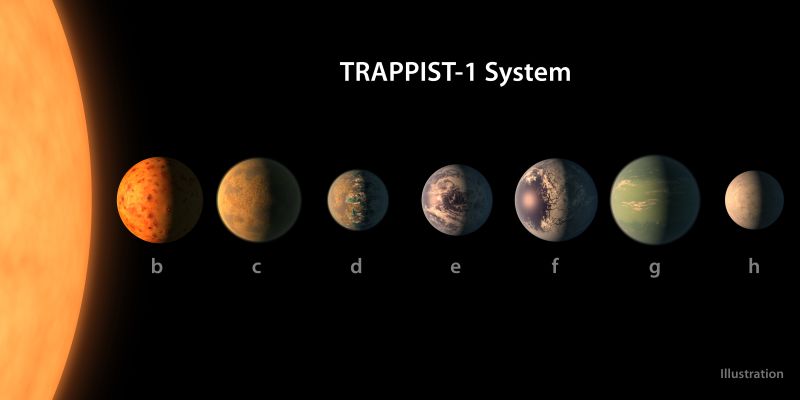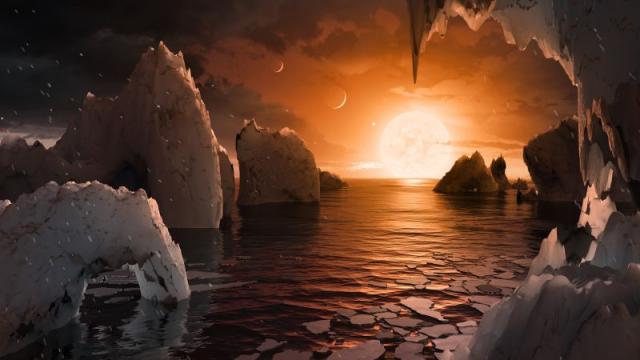TRAPPIST-1 would like to remind you that it was drinkin’ beer while you were still rompin’ around in your diapers — or whatever old people say. The ultracool dwarf star system, which first was announced back in February, has garnered a lot of interest because it harbours seven Earth-size planets. At least three of those planets are within the habitable zone that can support liquid water and potentially, life. As we’re all clamouring to understand this alien system, a duo of researchers has figured out some pretty salient information about its star’s age.
Image: NASA/JPL-Caltech
The team of astronomers used information gathered from various telescopes to determine TRAPPIST-1’s age, which they estimate is between 5.4 and 9.8 billion years old. Our Sun is a whippersnapper by comparison: It’s only about 4.5 billion years old.
“We don’t get the birth certificates of stars when we find them, we just see how they are today,” University of California, San Diego astronomer Adam Burgasser, a co-author on the research, which is set to be published on The Astrophysical Journal, told Gizmodo. “So we had to look for clues that might change on the star over time.”

Artist’s rendering of the TRAPPIST-1 planetary system. (Image: NASA/JPL-Caltech)
Burgasser and his colleague, NASA Exoplanet Exploration Program deputy program scientist Eric Mamajek, used various lines of known data about TRAPPIST-1 to piece together a statistical constraint, which is basically a damn good educated guess about the star’s age. For clues, the team looked at factors such as the speed of TRAPPIST-1’s orbit around the Milky Way and its atmosphere’s composition.
Understanding more about this foreign star system just for the sake of it is pretty cool — after all, TRAPPIST-1 is so delightfully weird. But understanding the system’s age could have some pretty big implications for life on the planets, if there is any.
“Understanding age is pretty important important when you think about the development of planets themselves, and potentially life on these planets,” Burgasser said. “It took about four billion years for complex life to form on Earth, so if we’re thinking about if there’s any life on these planets, how long has it been there to evolve and develop.”
Obviously, the question of whether or not the TRAPPIST-1 planets can support life is up for debate. Some astronomers think that life probably couldn’t sustain itself on these planets, due to their close proximity to their host star. M dwarf stars like TRAPPIST-1 are known for spitting off large solar flares, and some researchers think this could have eroded the planets’ atmospheres. Also, after being so close to their star for billions of years, it’s possible that any water on these planets has boiled away, due to aeons of bombardment with high-energy radiation. Of course, other researchers think there’s a shot life on these planets could exist in certain places, so at this point we’re still left with more questions than answers.
Hopefully, the launch of big telescopes like James Webb will aid in our understanding of alien systems such as TRAPPIST-1. Now that we know it’s old, it seems there are even more mysteries out there waiting to be solved.
[NASA]
